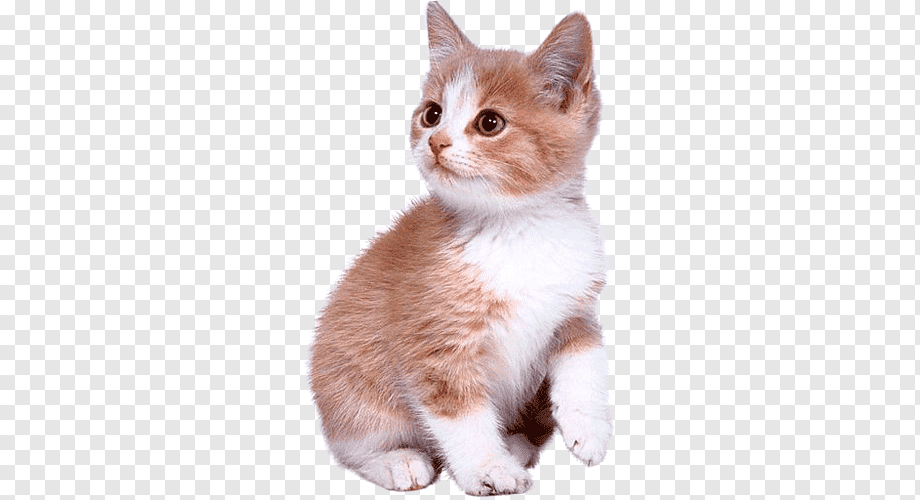Pet Health Articles
A cataract is any opacity in the normally clear crystalline lens of the eye. A cataract can be small or focal and not interfere with vision, or it can progress and involve more of the lens resulting in troubled vision or blindness in the affected pet. Advanced or complete cataracts may a...
 18 Apr
18 Apr
The third eyelid or Nictitating Membrane is present in most animal species including dogs and cats. Associated with this third eyelid is a gland (gland of the third eyelid) which plays an important role in maintaining ocular health as it contributes to the production of tears. It produces 30 t...
 17 Apr
17 Apr
Epiphora (excessive tearing) results in persistent wetness, and often staining, of the hair below the eyes. This is not only unsightly (and sometimes malodorous), but it may become irritating to the pet's skin since it creates an excellent bed for bacterial growth and secondary skin infections...
 21 Apr
21 Apr
Feline herpes virus is a very common respiratory virus in cats. It is a contagious disease that is most common in kittens or young cats. Up to 85 percent of kittens may be exposed to the virus at birth. Kittens that develop severe infections at birth can wind up with extensive scarring on the...
 18 Apr
18 Apr
Glaucoma is defined as an increase in intraocular pressure (pressure within the eye). Elevated intraocular pressure (IOP) (greater than 25 mm Hg in the dog and 30 mm Hg in the cat) can lead to pain and irreversible loss of vision. Glaucoma is one of the leading causes of blindness in animals and peo...
 21 Apr
21 Apr
A normal tear film is vital to the health of the surface of the eye. Tears perform numerous functions including lubricating the eye surface to facilitate blinking, keeping the cornea clear and shiny for normal vision, and fighting off infection with natural antibodies and other proteins. ...
 21 Apr
21 Apr
The most common change noted in the eyes of the aging animal is lenticular sclerosis, or hardening of the lens. This is also sometimes referred to as nuclear sclerosis. This is a phenomenon well-known to humans - especially as they approach their fourth decade of life and come to...
 21 Apr
21 Apr
The iris is the colored tissue visible in the eye, and its appearance can vary between species and from animal to animal. It is rich in blood supply and is made up of tissue called stroma, as well as muscles that control the size of the pupil. Normally, in bright light, the constrictor (...
 18 Apr
18 Apr
The vitreous is the clear, gel-like substance that fills the space between the lens and the retina. This gel aids in keeping the retina positioned against the back wall of the eye. Causes With aging, calcium and other particles can spontaneously settle out within the vitreous. This causes th...
 21 Apr
21 Apr
The cornea is the clear outer window of the eye and is made up of three layers: Epithelium - the outermost layer (bathed by tears) Stroma - the middle and largest layer. This region of the cornea is made up of precisely arranged layers of collagen fibers. This undisturbed arrangement is cr...
 22 Apr
22 Apr
The retina is the light-sensitive tissue in the back of the eye and is made up of photoreceptor cells called rods and cones. The rods are responsible for vision in low light conditions and the cone cells are responsible for vision in bright light. The retina captures the light that enters the eye an...
 21 Apr
21 Apr
The cornea is the clear outer window of the eye and is made up of three layers: Epithelium - the outermost layer (bathed by tears) Stroma - the middle and largest layer. This region of the cornea is made up of precisely arranged layers of collagen fibers. This precise arran...
 21 Apr
21 Apr
Entropion is an inward rolling of the eyelids. This can cause the eyelashes or hairs of the eyelids to rub against the cornea (the sensitive, clear outer window of the eye) which is often uncomfortable or painful. This can also lead to serious eye damage by causing corneal ulcers or scar tissue form...
 21 Apr
21 Apr
Ectropion is the turning out (eversion) of the eyelid. This usually affects the lower eyelids giving the animal a "droopy" eye appearance. Aside from being unattractive, ectropion can result in irritation because it causes exposure of the eyeball and the sensitive inner lining of the lid (conjunctiv...
 15 Apr
15 Apr
Collie Eye Anomaly (CEA) is an inherited, developmental abnormality of the eye. It is seen in the Collie breed and can also be seen in the Shetland Sheepdog and the Australian Shepherd. The condition affects both eyes, though one eye may be more seriously affected than the other. Generally this diso...
 21 Apr
21 Apr
The cornea is made up of three layers: the epithelium (outer layer), the stroma (middle layer) and the endothelium (innermost layer). The epithelium serves a protective barrier and prevents irritants and infectious agents (bacterial and fungal organisms) from entering the deeper layers of the...
 22 Apr
22 Apr
Keratitis is a generic term indicating inflammation in the cornea. Inflammation can be a feature in a variety of eye conditions and is a non-specific term. Inflammatory cells can be of various types, and one must examine the tissue microscopically to determine which cells are present and better defi...
The cornea is made up of three layers: the epithelium (outer layer), the stroma (middle layer) and the endothelium (innermost layer). The epithelium serves as a protective barrier and prevents irritants and infectious agents (bacterial and fungal organisms) from entering the deeper layers of t...
 21 Apr
21 Apr
The uveal tract is made up of the iris (colored part of the eye), the ciliary body, and the choroid. The ciliary body is located behind the iris and produces aqueous humor (the fluid inside the eye). The choroid is tissue in the back part of the eye that is situated between the inner ret...
 15 Apr
15 Apr
What is Horner's Syndrome? Horner's Syndrome is a condition that occurs when certain muscles of the face and eye lose stimulation by nerves from the sympathetic nervous system. Causes Horner's Syndrome is caused by damage or injury to nerves that are part of the sympathetic nervous system. T...
 22 Apr
22 Apr
Pannus (Chronic Superficial Keratoconjuncitivitis) is an inflammatory condition that can involve the cornea and/or third eyelid (nictitating membrane) of the dog. Causes of Pannus The exact cause is unknown. Although it can occur in any breed of dog, this condition is most commonly se...
 21 Apr
21 Apr
Determination of a dog's ability to see or the quality of its vision is not always straightforward. There are varying degrees of vision loss and many causes for reduced vision. Some causes may be apparent during the course of a cursory examination, and in other instances may require a detailed exam...



